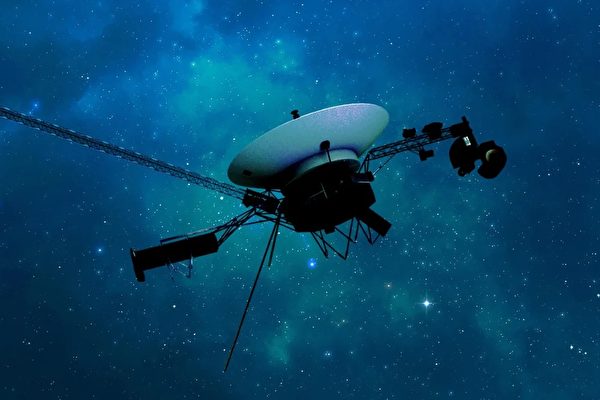In a recent development, engineers at the National Aeronautics and Space Administration (NASA) have successfully reestablished contact with Voyager 1, the space probe located approximately 14.3 billion miles (22.9 billion kilometers) away from Earth. After experiencing weeks of inactivity due to a decrease in power supply, Voyager 1 is now back to normal operation.
The issue with Voyager 1 began on October 18 when the Deep Space Network temporarily lost track of the probe’s signal, prompting ground teams to realize that something was amiss. By October 19, communication appeared to have completely halted. On October 24, the aging probe shut down its X-band transmitter and switched to the S-band radio transmitter, which emits a much weaker signal, enabling communication with the ground team.
Given Voyager 1’s considerable distance from Earth, the ground team initially faced uncertainty about detecting the S-band signal on Earth. However, engineers at the Deep Space Network eventually managed to locate it. Despite this progress, the probe was still in a troubled state at the time, and the ground team continued to work diligently to identify the cause of the malfunction.
This unexpected turn of events left engineers without status updates on Voyager 1 and the scientific data it had been collecting for nearly a month.
Following the successful resolution of some issues, the ground team issued commands on November 7 to switch Voyager 1 back to its X-band transmitter, beginning data collection from the space probe on a daily basis starting from the week of November 18.
According to CNN, Kareem Badaruddin, the Voyager Mission Manager at NASA’s Jet Propulsion Laboratory, expressed in an email, “The probe was never designed to operate in this manner (referring to the shift from X-band to S-band), and the team is learning something new every day. Fortunately, they were able to resolve the issue and gain valuable insights.”
Launched in 1977, both Voyager 1 and Voyager 2 have been soaring through space for 47 years, surpassing their initial missions. They have now entered interstellar space, becoming the only spacecraft operating beyond the heliosphere, which extends well beyond the orbit of Pluto.
Despite their advanced age, Voyager 1 continues to explore uncharted territories approximately 14.3 billion miles away from Earth, while Voyager 2 operates at a distance exceeding 12 billion miles (20 billion kilometers).
These two spacecraft are NASA’s sole entities in interstellar space, directly sampling the space environment. They serve to study plasma, magnetic fields, and particles in interstellar space. The information they gather is aiding scientists in understanding the heliosphere’s comet-like shape and how it shields Earth from high-energy particles and radiation in space.
Utilizing the Deep Space Network, these aging probes consistently transmit scientific data back, sending roughly six to eight hours of detection data daily.
However, the recent malfunction is just one of the many challenges Voyager 1 and Voyager 2 have had to face in recent years.
The power source for these two probes is generated from the decay of plutonium, converting the heat produced into electrical energy. According to NASA, they lose about 4 watts of power per year, equivalent to a small energy-efficient light bulb.
Approximately five years ago, the ground team began shutting down non-essential systems on the probes to conserve power. Some of these systems included heaters used to maintain scientific instruments at the correct operating temperatures. To their surprise, all instruments continued to function normally, even at lower temperatures than tested decades ago.
Bruce Waggoner, the Voyager 1 Mission Assurance Manager, informed CNN in November that engineers occasionally send commands to Voyager 1 to activate some heaters, warming components that have suffered radiation damage over decades. Heat can help reverse radiation damage, which can degrade the performance of spacecraft components.

